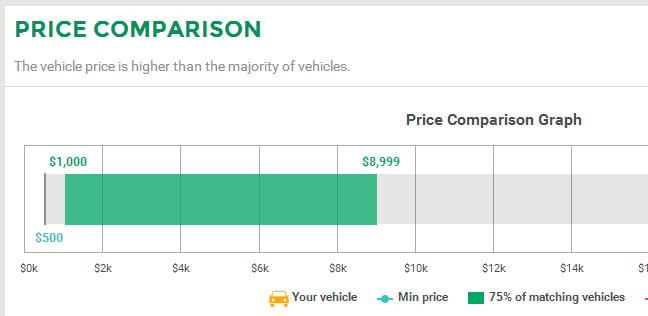
The vehicle identification number (VIN) is composed of 17 characters (digits and capital letters) that act as a unique identifier for the vehicle. A VIN displays the car's unique features, specifications and manufacturer.
The VIN can be found in a couple of places including on the car's registration label (1), on the compliance plate in the engine bay (2) or on the passenger side windshield (3), or on one of the door posts (where the door latches when it is closed) (4). See the image below:
A CarHistory Price Comparison Report for only $9.30 allows you to compare a car you are thinking of buying with other similar vehicles in the market, in terms of both price and the number of kilometres travelled.
By entering the current sales listing price and odometer reading of the car you are looking to purchase, you can compare it to similar vehicles that are up for sale or have recently been sold.
This gives you a better view of the price similar vehicles are actually selling for, and can provide you with a great tool to negotiate with sellers - helping you to get the best deal for the car.
Or upgrade to a full CarHistory Report to access the most comprehensive vehicle history information in Australia.

Upgrading to a full CarHistory Report provides you with comprehensive vehicle history information to help make an informed decision.
The CarHistory Report includes the Price Comparison Report as well as PPSR Certificate, stolen and written off checks, sales and odometer comparisons and whether the vehicle has any finance owing on it. Find out more.